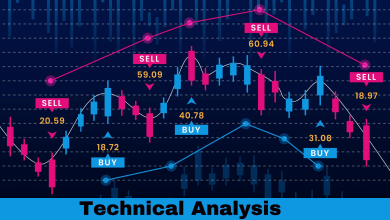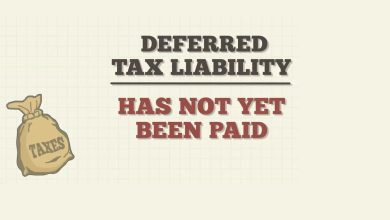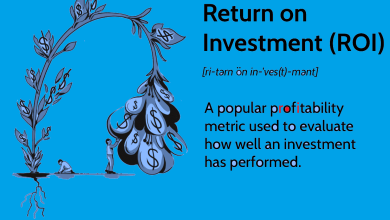What Is Monetary Policy?
Before discussing the Objectives of Monetary Policy we should know what the thing is. Monetary policy refers to those policy measures of the central bank which are adopted to regulated the volume of currency and credit in a country add thus affecting the monetary system of the country. Paul Einzing defines the monetary policy as “the effort to reduce to a minimum the disadvantages and increase its advantages resulting from the existence and operation of a monetary system”. So, the objectives of monetary policy are to reduce the disadvantages and increase its advantages.
Broadly speaking, monetary policy refers to the policy of the central bank which it perused with a view to administer and control the country’s money supply including the currency and demand deposits and managing the foreign exchange rates.
The central bank coordinates the money supply, credit supply, government expenditure and the rates of interest through its monetary policy in such a way so that the monetary system may be benefited to the maximum extent. Through its monetary policy, the central bank tries to achieve the national objectives . By achieving the objectives of Monetary Policy, economy is strengthened.
Objectives of Monetary policy
Economists have conflicting and divergent views on the objectives of monetary policy because they change from time to time according to the changes in the business activities and level of economic development. The following are the main objectives of monetary policy-
(1) Stability of Exchange Rates: This is one of the principal objectives of Monetary Policy. In international trade, transactions take place on the basis of a fixed rate of exchange. Any change in the exchange rate affects the balance of payment situation to a great extent.
Hence, it is essential to maintain the rate of exchange between the two currencies. In gold standard. stability of rate of exchange was maintained through the automatic working of the system The balance of payments was settled by importing or exporting the gold to and from one country to another.
But the gold standard was finally abandoned after the World War first and therefore, the objective of maintaining stability of rate was also lost its importance. However, in paper currency standard, the stability is maintained by devaluing or revaluing the currency as the case may be. Now in most of the countries the monetary policy is directed towards achieving economic stability.
(2) Price Stability. Money economists like Gustav Cassel and Keynes argued that the main objective of the monetary policy of a country should be to maintain the domestic price stability even if there is destabilization in the exchange ratio. The reason is that violent fluctuation in domestic prices create the problem of inflation or deflation which cause enormous hardships to wage-earners, consumers and fixed income group persons. The views of the economists were confirmed by the post war inflation and depression of 1930s.
The objective of price stability was also criticized on several grounds-
(i) the term ‘price’ is a very vague term. Should the price level mean wholesale price, retail price, labor-price and so on or general price level,
(ii) the stabilization of general price level is compatible with rising or falling of individual prices and
(iii) the objective of price stability ignores the realistic requirements of the dynamic society. The modern economists are of the view that the objective of monetary policy should not be restricted only to the price stability but to the stabilization of the economic activity at full employment level in the economy. Due to the aforesaid limitations, the objective of price stability has lost its importance.
(3) Neutrality of Money: Prof. Hayek and some other economists belonging to the Austrian school have emphasized that the main Objective of the monetary policy of a country should be the neutrality of money. This is based on the assumption that the money should act as a medium of exchange and not as a measure of value. It means that the money supply should be regulated in such a way as to keep the output, price and employment unaffected.
It is possible only when the supply remains constant. The assumption on which the objective is based is hypothetical in a dynamic society. It is also wrong to assume that price level will not fluctuate if money supply is constant. Even if the money supply remains constant, the velocity of money may change the price level upward, or downward. Thus, it is clear. that money authority cannot keep the money neutral by maintaining the money supply.
(4) Full Employment: The monetary policy of the central bank of a country should be to maintain. the level of full employment. The level of full employment refers to the situation in which all those who are able and willing to work at prevailing rates of wages may get employment opportunities. It is not very difficult for most of the countries to achieve the level of full employment but to maintain it in the long run is really a problem. Periodic fluctuations in economic activities may cause unemployment in the economic system.
It represents a situation where the current investment is less than the current savings. The monetary policy, should be directed to ensure that the current investment exceeds current savings and this can be done only by the creation of bank credit, bank deposits or by higher velocity of circulation.
Once the full employment level is achieved, the objective of monetary policy should be to maintain it; by maintaining equality between savings and investment at ful1employment level. According to Crowther, “the obvious objectives of the monetary policy of a country should be to attain equilibrium between saving and investment at the point of full employment”.
(5) Economic Growth with Stability. The objective of maintaining level of full employment may be the objectives of monetary policy in most of the developed countries because they have achieved that level. But for underdeveloped countries the main objectives of monetary policy should be directed towards achieving high rate of economic growth in a thrust to achieve the level of full employment. The monetary authority in an under developed economy can use different tools to promote economic growth.
Economic growth refers to a process whereby the real national income of an economy increases over long period of time. The increase in national income means availability of more goods and services in a country due a given period of time. Thus, economic growth means attaining the high level of achievement.
The Main Problem of Economic Growth:
The main hindrance in economic growth in the underdeveloped countries is the lack of investment activities and the aim of monetary policy there should be to activate the investment activities. Secondly, it should manage the investment activities in such a way as to discourage the investment in less productive or less useful activities and encourage investments in highly productive or more useful activities of the economy.
Thus, the monetary policy should be a mixture of ‘cheap’ and tight monetary management so as to encourage or discourage investment according to the requirements of the country. Besides, monetary policy should aim maintaining stability in the economy over a long period of time.
The Objectives of Monetary Policy in Underdeveloped Countries somewhat differs from those of developed countries. The objectives of monetary policy in a developed country is to maintain the level of full employment whereas, that of underdeveloped countries is to attain and maintain economic growth with stability.




